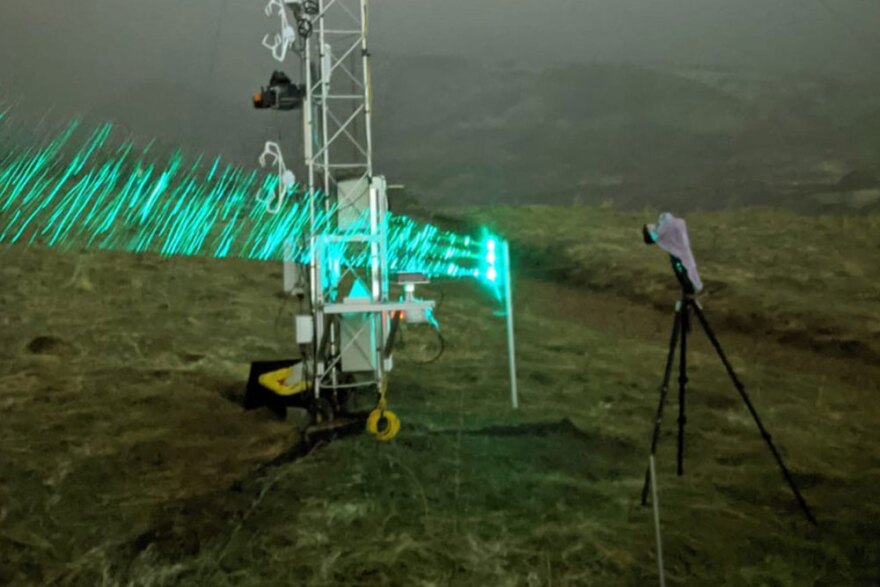For decades, scientists have generally approached the physics of falling snow the same way they did rain — assuming it’ll drop straight down.
Anyone who’s seen the fluffy white stuff swirl through the air, however, knows that’s not what happens in the real world.
New research from the University of Utah is demystifying the science behind that swirliness. Tim Garrett, who led the study, said the way snow dances through the air is surprisingly predictable.
“Even though the snowflake motions were chaotic, they also seem to be in some way carefully choreographed,” the University of Utah atmospheric sciences professor said. “There was an underlying mathematical simplicity to how the snowflakes were moving that we did not expect to see.”
The research found exponential connections between snow’s speed, shape and size — patterns that scale up or down in a linear fashion as the wind becomes more or less turbulent. They discovered as turbulence increased, the flakes also got bigger and fell harder.
“We were able to see some sort of deeper connection that we do not yet understand between how snowflakes swirl in the air and how big and fluffy the snowflakes ultimately get.”
Up in the Wasatch Mountains around Alta, the team analyzed more than a half million snowflakes with a combination of scientific instruments that Garrett said had never been tried in tandem before.
They tracked the snow’s response to turbulence as the flakes fell through a sheet of bright green laser lights. Then a brand new device developed by mechanical engineering researcher Dhiraj Kumar Singh measured the mass and density of each snowflake — a challenging feat with such tiny, delicate test subjects.
That instrument, dubbed a Differential Emissivity Imaging Disdrometer, used an infrared camera to quickly capture the details of the flakes melting and evaporating as they landed on a plate that’s essentially a hot frying pan. By combining the data from the laser light camera and the frying pan camera, the team could link the flakes’ movements with their size and shape.
“Are they falling all with the same terminal velocity? No,” Singh said. “All have a different density [and] different size, so then all have a different velocity.”

The findings could have a big impact on forecasting. Knowing how fast precipitation falls tells us how long storms will last and where they may go. That could improve predictions for skiing conditions, winter road hazards or avalanche risks.
With this system, Singh said, someone could predict how stable layers of snowpack are on the mountainside from the comfort of their office.
“What type of snow is there? What is the crystal type of the snow? What is the stability of the layer?” Singh said. “All that we can measure using this device.”
A better understanding of snow’s movement could even help with anticipating hurricane paths and determining whether or not to evacuate a city, Garrett said, especially since those storms' upper levels reach high altitudes with freezing temperatures.

The research could have implications beyond weather, too, eventually informing our knowledge of how pollen and seeds spread through the air or how nutrients filter down into the ocean’s depths.
The study is just a first step into a part of science we still don’t fully understand, Garrett said. They don’t yet know why these mathematical patterns exist, for instance. The good news is that however complicated this puzzle becomes, it has fluffy little messengers to help even non-scientists wrap their heads around it.
“There's a lot to like about snowflakes as a physics problem,” he said. “So I felt that this was a good bridge between basic physics and public appreciation.”






